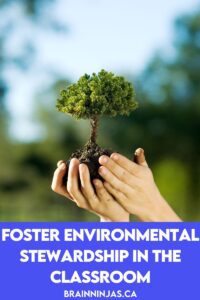
Climate change is a real concern for most young people these days. We have used environmental stewardship lessons as part of our overall science lessons, but there are lots of things that you can do in the classroom to help foster a love of caring for our planet. Little changes can make a big difference over time. Environmental stewardship is more than just taking care of the planet. It is about being a responsible citizen and thinking about how we impact the world. Come learn about how we integrate these lessons directly into the classroom.
Reducing Energy Consumption in the Community
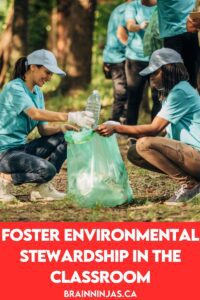
There are lots of ways schools are wasteful, but teaching your students some basic ideas about how to be environmental stewards begins in the classroom. Encourage students to turn off lights and unplug devices when not in use. Using the natural light that is available in the classroom can mean having fewer lights on in the classroom during the day.
Encourage students not to leave taps running in washrooms or fountains. Instead of running water until it’s cold, ask students to bring water bottles from home with ice in them. Then the ice will melt slowly through the day, and students won’t need to run the water for a long time.
When possible, ask families to walk, bike, or carpool to school. Students can reduce carbon by not driving to school. If that’s not possible, encourage taking public transit or the school bus.
Learn About Where Waste Goes
It is important for students to understand where the waste they produce ends up. Often students know that it gets driven away in a garbage truck, but few know where it goes after that. Environmental stewardship is understanding all the issues around waste management. We have written several different sets of lessons and resources to help educate our students.
Waste in Our World Reading Passages – Find it on TpT ($USD) or our BN Shop ($CAN).
The Rs of Waste – Find it on TpT ($USD) or our BN Shop ($CAN).
Types of Waste – Find it on TpT ($USD) or our BN Shop ($CAN).
Methods of Disposal – Find it on TpT ($USD) or our BN Shop ($CAN).
All of our Waste Resources are available in one bundle, along with support materials and a unit plan. Find it on TpT ($USD) or our BN Shop ($CAN).
Lobby the Government and Companies
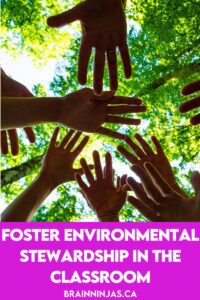
Students can write to local government officials to lobby for initiatives to reduce carbon emissions. They can ask leaders to create policies encouraging citizens to reduce waste or develop programs to manage waste more effectively.
Write letters to companies about their wasteful packaging. Have students look at the ways things are packaged. Even a simple trip to the grocery store can be great. We made an appointment with a local grocery store and explained that we were examining how different items were packaged. Students were horrified to see how fruits and vegetables were wrapped in unnecessary plastic. The manager allowed us to take photos of some of the worst offenders so we could use them in our letters to the packaging companies.
Reduce Plastic Waste in the Classroom
Encourage students to use reusable water bottles, lunch containers, and utensils to reduce plastic waste while they are eating and drinking in the classroom.
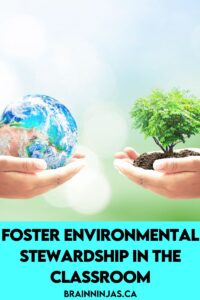
Ask for a collection of reusable bags. Everyone has too many in their closets at home, so instead, have a collection in the classroom that you can use when students need a bag to take things home.
Students can create a plan to help reduce the amount of plastic being brought into the classroom through this Waste Reduction Plan. They can learn about different ways to reduce waste and then create a plan that they can initiate and document over time. Find the Waste Reduction Plan in our TpT Store ($USD) or our BN Shop ($CAN).
If your students are examining different ways to reduce the amount of plastic that gets thrown away, start with this collaborative poster to introduce the different ways. Collaborative posters are a fun way to learn new content. Students each colour their own piece of a poster. Our sets come with 18, 24, or 36 pieces. Once coloured, the pieces are assembled into a poster. Find the Waste Collaborative Poster in our TpT Store ($USD) or our BN Shop ($CAN).
Create a Repurpose Fair for Environmental Stewardship
Students can bring gently used books or toys, and other students can take them home. We kept it really simple by allowing students to donate as much as they wanted, and everyone got one choice per round. Once all the classes had been through, students who made donations were allowed to go back for seconds.
We point out that while recycling is better than throwing items away, recycling takes energy to do. So, reusing and repurposing items saves even more energy than recycling.
Gardening at School
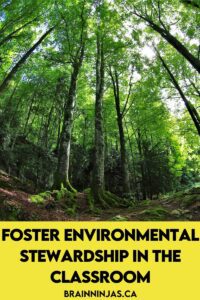
Planting trees and gardens can help absorb carbon dioxide and reduce the amount of greenhouse gases in the atmosphere. In many classes, students can use the gardens during their science lessons. A gardening club can help manage the gardens.
Encourage students to compost food scraps and yard waste to reduce greenhouse gas emissions from landfills. Our school gave each class a bucket with a lid and taught students what could or could not go in the bucket for composting. Each Friday, the gardening club picked up all the buckets and put the materials in the compost bin near our garden. They rinsed the buckets and returned them to the classrooms so they would be clean for the next week.
Have your students learn all about Biodegradability. This lesson and set of activities can be found in our TpT Store ($USD) or BN Shop ($CAN).
Educating Others About Environmental Stewardship
Encourage students to share their knowledge and educate others about climate change and what they can do to reduce their impact on the environment.
Art is a great way to show what you have learned. You can get our sample upcycled art lesson in our Resource Library. We can send you a copy when you join our ninja news email list.
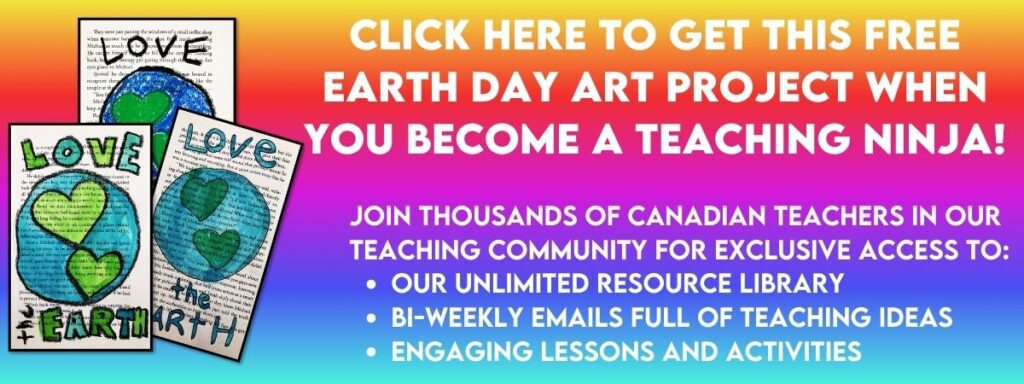
If you enjoy upcycling materials into art projects, you should check out our Upcycled Art Projects lesson we wrote for our waste science unit. Find it in our TpT Store ($USD) or our BN Shop ($CAN).
Using Books for Environment Stewardship
We use books in our classroom to reinforce everything. Instead of making a separate list of books, we’ve listed our favourites in our Earth Day post instead. You can find the whole list here: Easy to Use Classroom Activities for Earth Day.
Do You Teach Science?
We have several other science-related posts full of ideas, lessons, resources, and books.
- How to Shock Your Students With Engaging Electricity Lessons
- How to Leverage Critical Thinking Challenges to Your Advantage
- 10 Engaging Weather Lessons All in One Place
- How to Grow a Healthy Classroom with Plants
- How to Learn About Wetlands Without A Pond
- 15 Simple Machines Activities that Will Hook Your Students
- How to Escalate Your Chemistry Experiments
- Recycle Old Art Projects 9 Fantastic Ways
- Astronomy Lessons That Are Out of This World
What are some of the ways you teach students to be environmental stewards? Let us know in the comments below.






